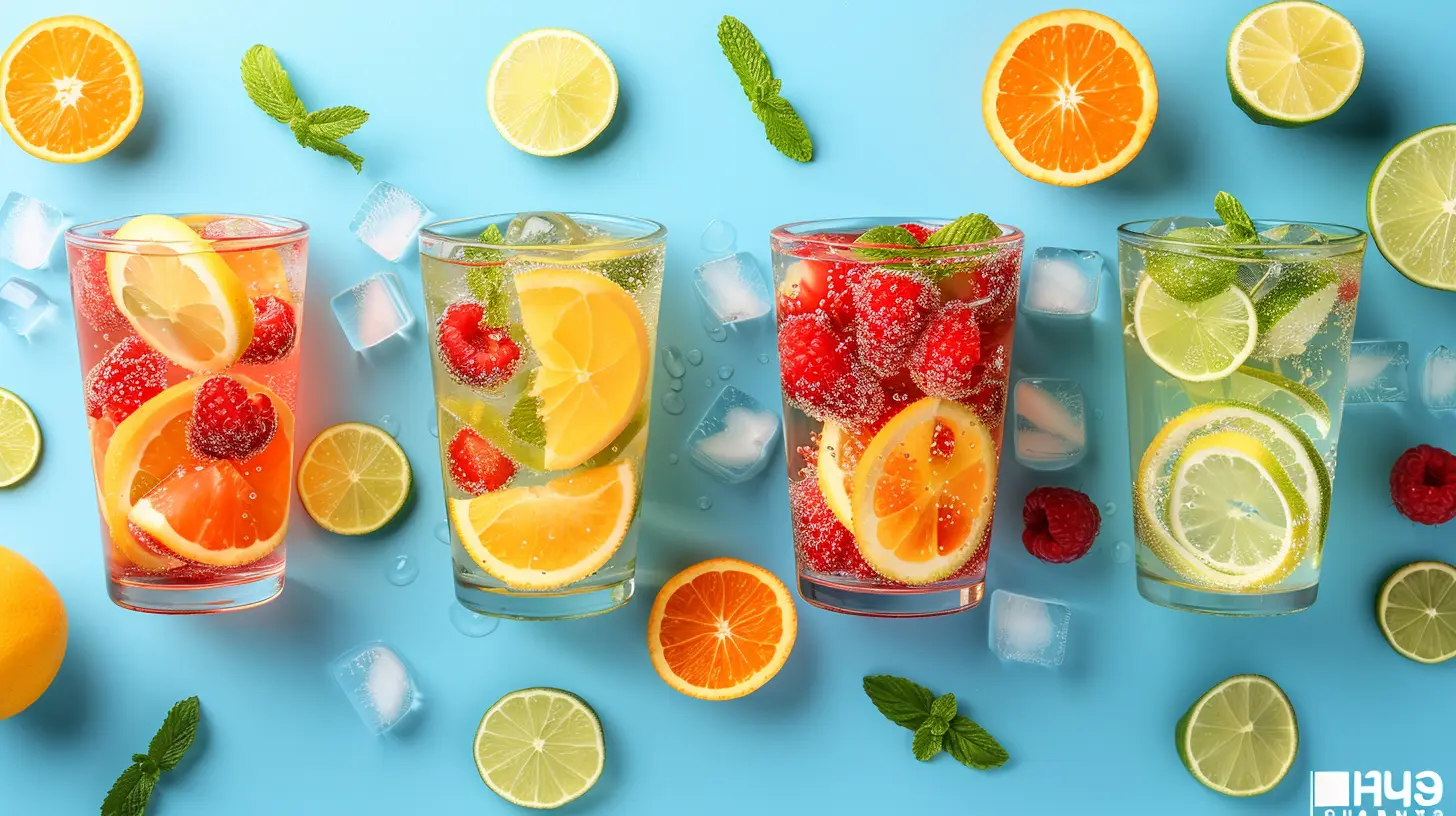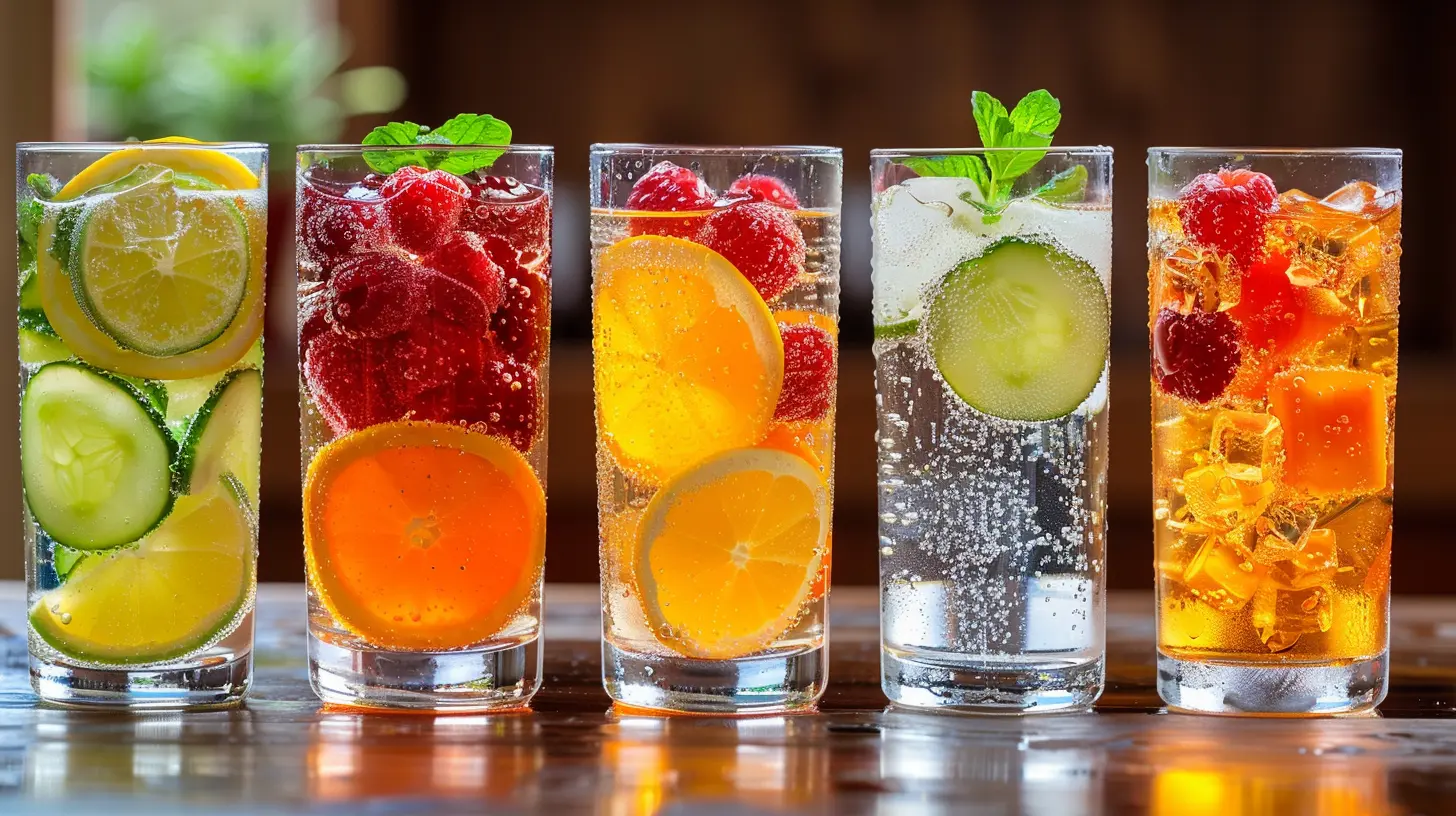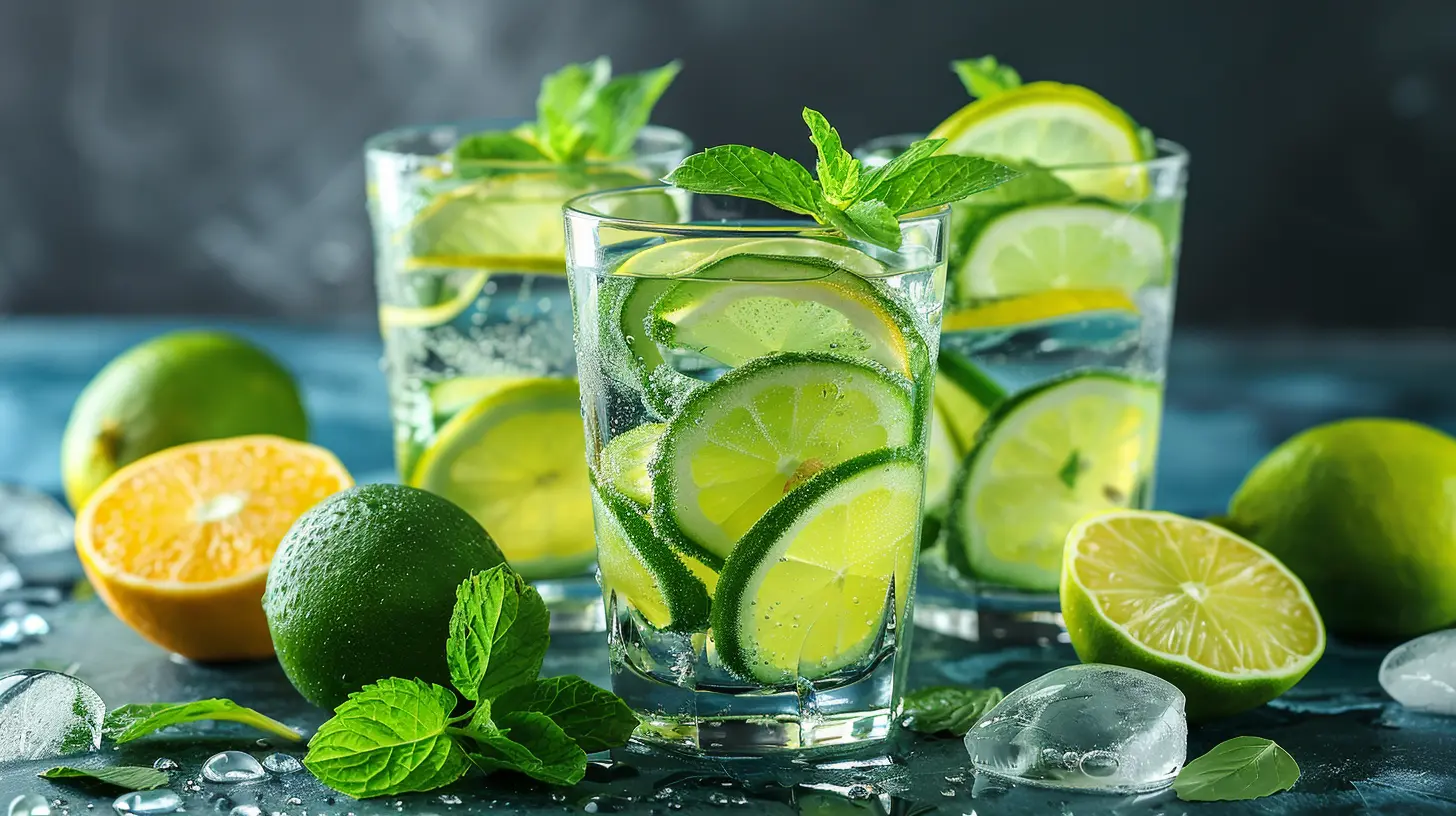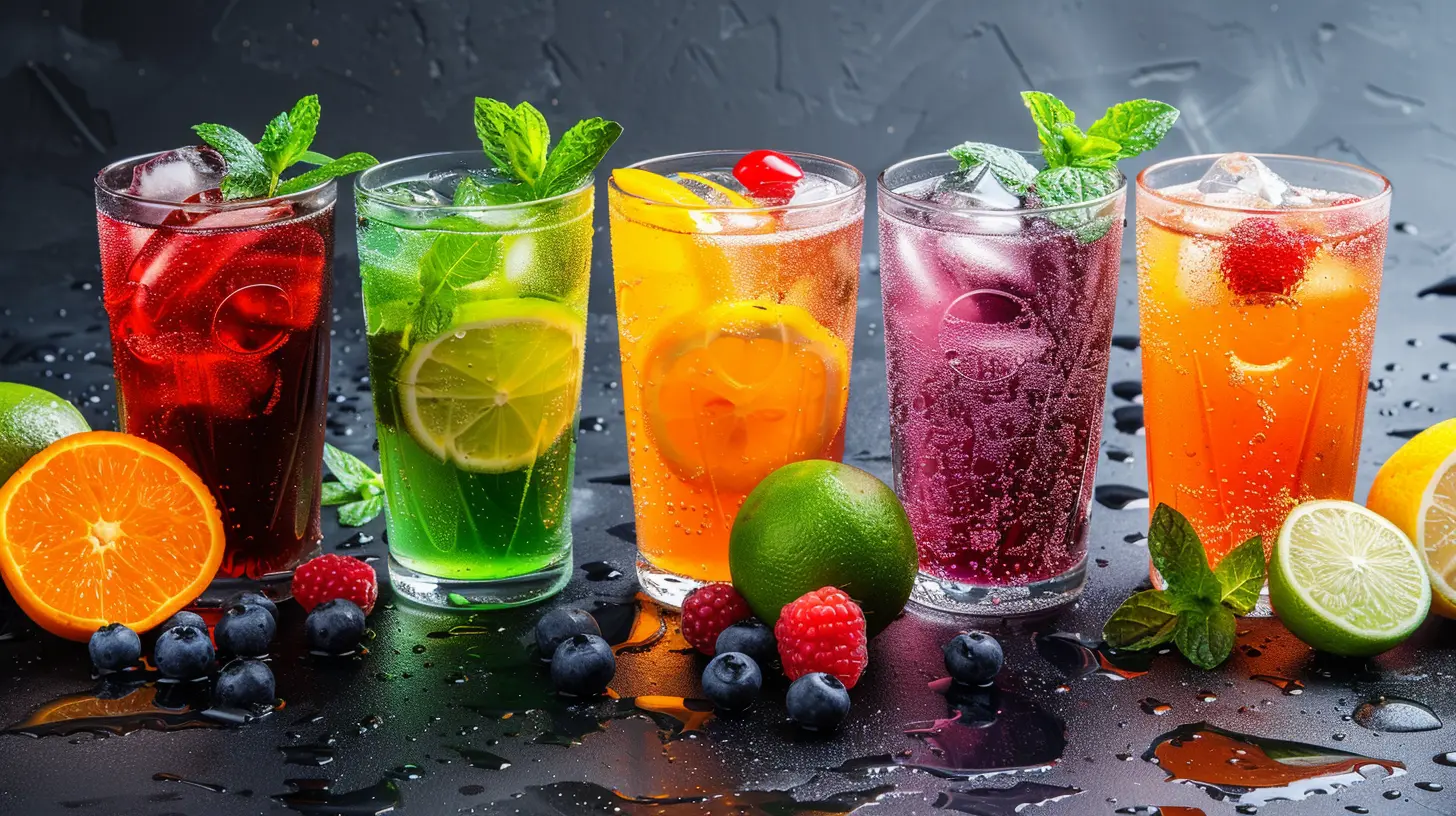Debunking Hydration Myths: What You Really Need to Know
24 November 2025
Let’s face it — we've all heard someone spouting off a so-called “fact” about hydration. “Drink eight glasses of water a day or you’ll dry up like a raisin!” or “If you’re thirsty, it's already too late!” Sound familiar? For a topic that seems so straightforward, hydration is actually wrapped in layers of myths and half-truths.
But here’s the deal: Proper hydration is essential, but it’s also misunderstood — a lot. In this post, we’re going to peel back the labels, ditch the myths, and give you straight-up facts about what your body actually needs when it comes to staying hydrated.
So grab your favorite beverage (yes, even if it’s coffee — more on that later), settle in, and let’s talk hydration, human-style.
Myth #1: You Must Drink 8 Glasses of Water a Day
Let’s start with the big kahuna. The ol’ "8x8 rule" — eight 8-ounce glasses a day.The Truth?
There’s actually no scientific basis for this one-size-fits-all number. Everyone’s hydration needs are different. It depends on your body size, activity level, age, climate, and even what you eat.Think of your body like a car. A tiny hybrid and a big pickup truck don’t use the same amount of gas. Same idea here — a petite person sitting at a desk all day won’t need as much water as someone running marathons in the sun.
Instead of obsessing over an arbitrary number, listen to your body. Feeling thirsty? That’s your signal.
Myth #2: Thirst Means You're Already Dehydrated
You’ve probably heard this one tossed around in fitness circles. The idea is that thirst is a desperate cry for help from your body. Not quite.The Truth?
Thirst is actually your body’s way of adjusting fluid balance — a normal, early sign that you need to sip something. It doesn’t mean you’re dangerously dehydrated. Think of it as your body nudging you gently rather than sounding an alarm.So yeah, don’t panic every time you feel thirsty. Just drink some water. It’s that simple.
Myth #3: Only Water Hydrates You
Water is queen. We can all agree on that. But saying it’s the only source of hydration? That’s selling your diet short.The Truth?
Many foods and drinks hydrate you. Foods like watermelon, cucumbers, oranges, soups, and even yogurt have high water content. And guess what? Beverages like milk, herbal tea, and yes, even coffee and soda, count toward your daily fluid intake.(Wait, what? Coffee? Let’s talk about that next.)
Myth #4: Coffee and Tea Dehydrate You
This myth is basically the hydration version of an urban legend. People love to hate on caffeine. But does your morning cup of joe leave you more dehydrated than before?The Truth?
Caffeine does have a mild diuretic effect — meaning it can increase urination slightly. But not enough to counteract the fluids you’re taking in. In fact, research shows that moderate caffeine consumption (think: 3-4 cups of coffee a day) contributes positively to your hydration levels.So go ahead and sip that latte guilt-free.
Myth #5: Clear Pee Means You’re Perfectly Hydrated
It’s the bathroom test, right? You peek in the toilet and go, “Nice! Crystal clear! I’m doing hydration right!”The Truth?
Not necessarily. While pale yellow urine can be a good sign you’re well-hydrated, completely clear urine all the time may mean you're actually going overboard. Your kidneys are great at filtering out excess water, but overhydration can dilute electrolytes and mess with your balance.Bottom line? You want your urine to be a light lemonade color — not water-clear, and not dark like apple juice.
Myth #6: Sports Drinks Are Always Better Than Water
TV commercials would have you believe that if you’re not chugging neon-colored sports drinks, your workout is wasted. But are they really necessary?The Truth?
It depends. If you're doing intense exercise for over an hour—especially in hot conditions—then sure, a sports drink can help replenish lost electrolytes and give you a quick carb boost. But if you’re taking a brisk walk, hitting the gym casually, or just doing yoga, water will do just fine.And keep in mind — sports drinks often come loaded with sugar and artificial ingredients. They’re not magic potions.
Myth #7: You Can’t Drink Too Much Water
This one trips a lot of people up. We’ve been trained to think more water = better health. But there’s a flip side.The Truth?
Yes, you absolutely can drink too much water. It’s called hyponatremia — and it happens when you dilute your blood sodium levels too much. Symptoms include headache, nausea, fatigue, confusion, and in extreme cases, it can be life-threatening.It’s rare, but it’s a thing — especially for marathoners or people who chug tons of water without replacing electrolytes.
Moral of the story? Balance is key. Don’t treat your water bottle like a bottomless pit.
Myth #8: Hydration Is Only Important When It’s Hot
It makes sense. You sweat more in the heat, so you naturally think you need to drink more. But does that mean you’re off the hook in colder months?The Truth?
Nope. In fact, cold weather can be sneaky. When it’s chilly, you might not feel as thirsty, but your body still loses fluids — through respiration, urination, and yes, even sweat under those cozy layers.Plus, heated indoor environments can dry out your skin and mucous membranes.
So don’t slack on drinking water in winter. Your body still needs it — maybe even more than you think.
Myth #9: Kids and Older Adults Don’t Need As Much Water
Sometimes we assume kids are fine because they’re small, and older adults don’t “do much,” so they don’t need to hydrate as much. Dangerous thinking.The Truth?
Children are more vulnerable to dehydration because their bodies have higher water turnover. They may not always recognize or express thirst. Meanwhile, older adults often have a dulled sense of thirst and may be taking medications that increase fluid loss.So both ends of the age spectrum need extra attention when it comes to hydration.
Myth #10: You Can't Be Dehydrated If You're Not Sweating
Sweat = fluid loss, yes. But there’s more to the story.The Truth?
You lose fluids in a bunch of ways — exhaling, urinating, crying (hello, rom-coms), and even digesting food. You don’t have to be drenched in sweat to need a water refill.Even just breathing in a dry environment can dehydrate you over time. So stay aware — not just during cardio.
Practical Hydration Tips That Actually Work
Alright, enough myth-busting. So how should you stay hydrated without obsessing or overdoing it?Here are some easy, stress-free guidelines:
1. Drink When You're Thirsty
Seriously. Your body is smarter than you think. If you feel thirsty, drink.2. Use the Pee Test
Aim for that light lemonade color. Too dark? Time to hydrate. Crystal clear all the time? Maybe ease up a little.3. Carry a Water Bottle You Love
Yes, aesthetic matters — if you love the look and feel of your bottle, you’ll be more likely to use it. Bonus points for insulation.4. Eat Your Water
Include hydrating foods in your meals — fruits, veggies, soups, and smoothies all count.5. Adjust for Activity and Climate
Sweating buckets during a summer hike? Drink more. Chilling at home in winter? Still drink — but maybe not as much.When to Speak with a Healthcare Professional
If you’re dealing with frequent dehydration symptoms (like dry mouth, dizziness, headaches, or fatigue), it might be time to talk to a doctor. Likewise, if you're managing health conditions like kidney disease, heart failure, or taking diuretics — hydration needs can get more complex.Don’t guess — get personalized advice if needed.
Final Thoughts: Hydration Doesn't Have to Be Complicated
Let’s keep it real — hydration isn’t about perfection. It’s not about hitting a magic number or guzzling water like it’s a competitive sport.It’s about tuning in, paying attention, and being kind to your body. Ditch the myths, sip when you're thirsty, and aim for balance.
At the end of the day, your body doesn’t speak in mystery — it sends pretty clear signals. All you’ve got to do is listen.
So, are you thirsty yet?
all images in this post were generated using AI tools
Category:
HydrationAuthor:

Jackson Mahoney

